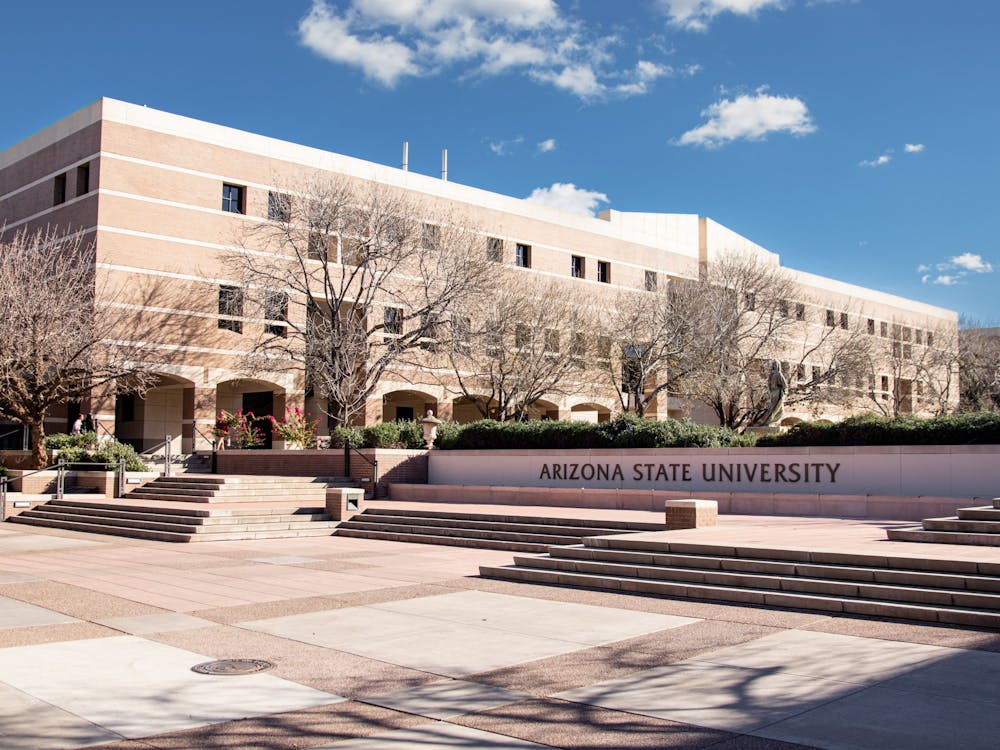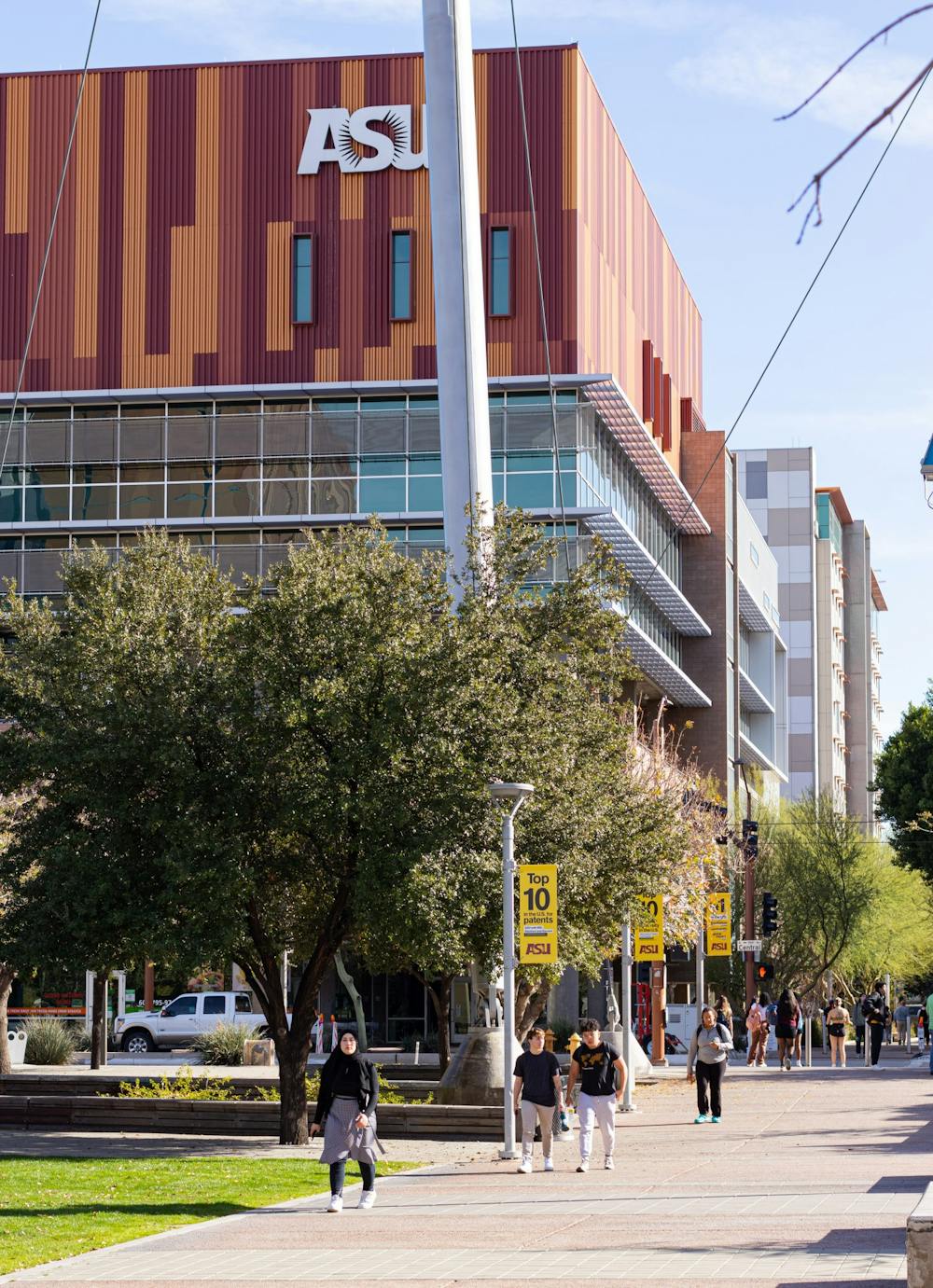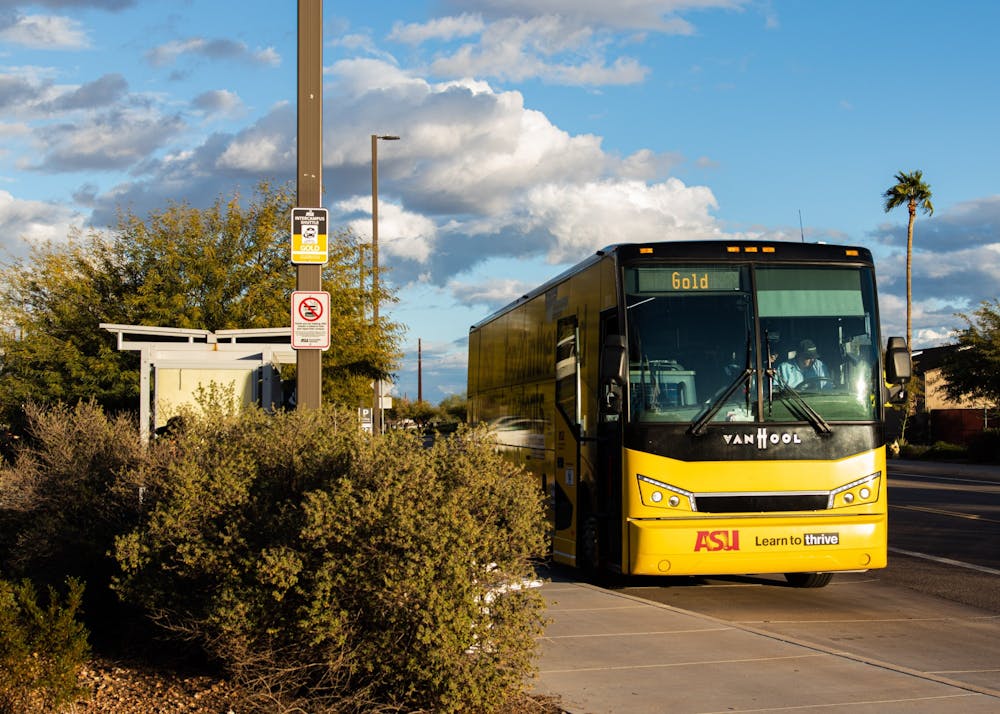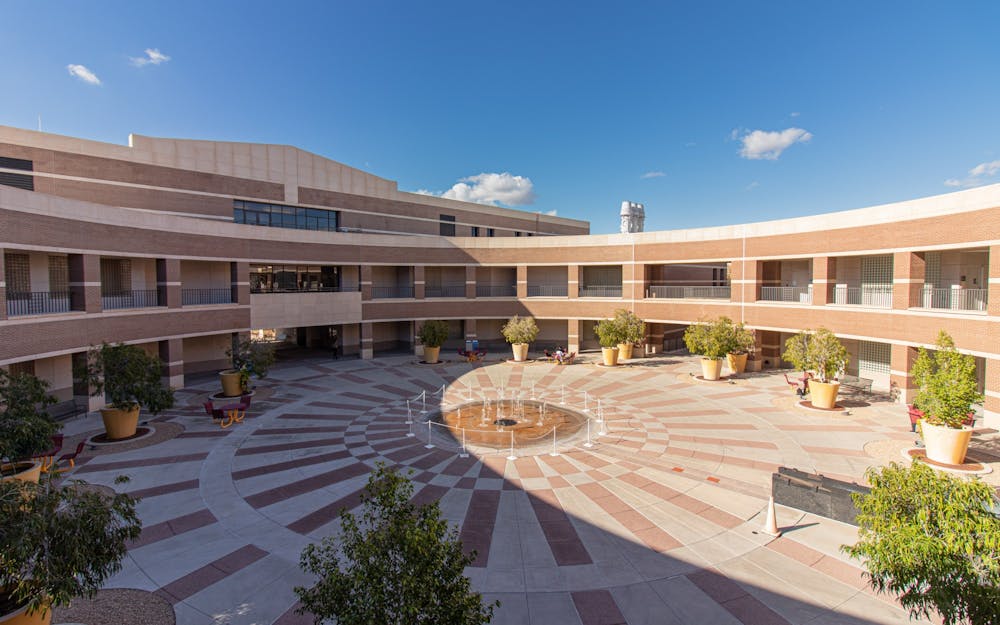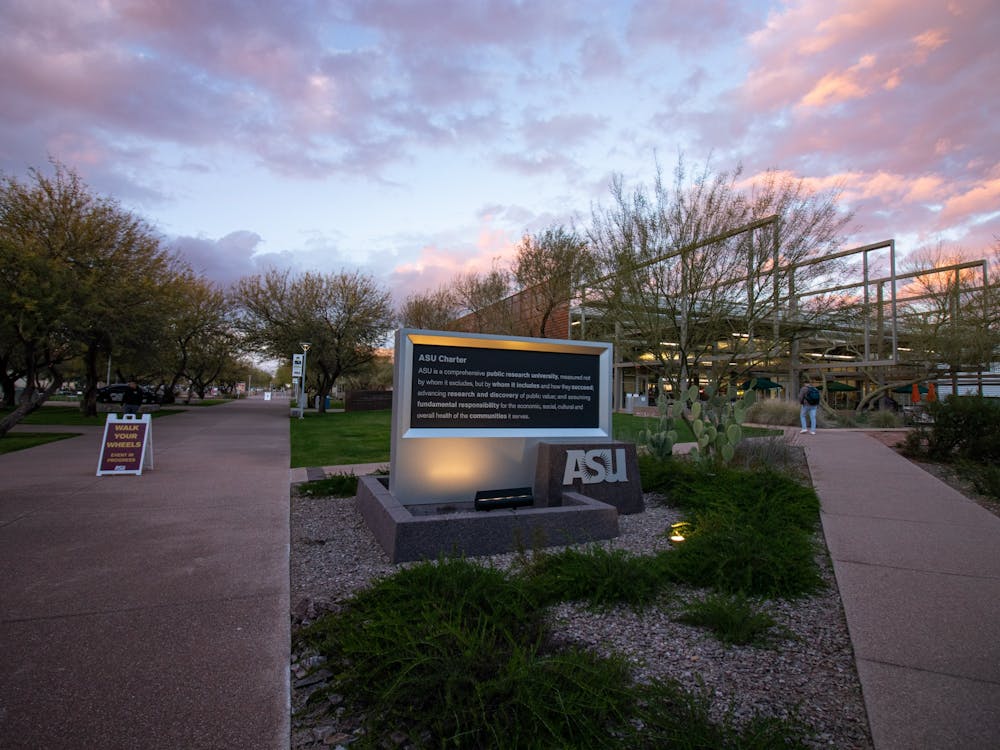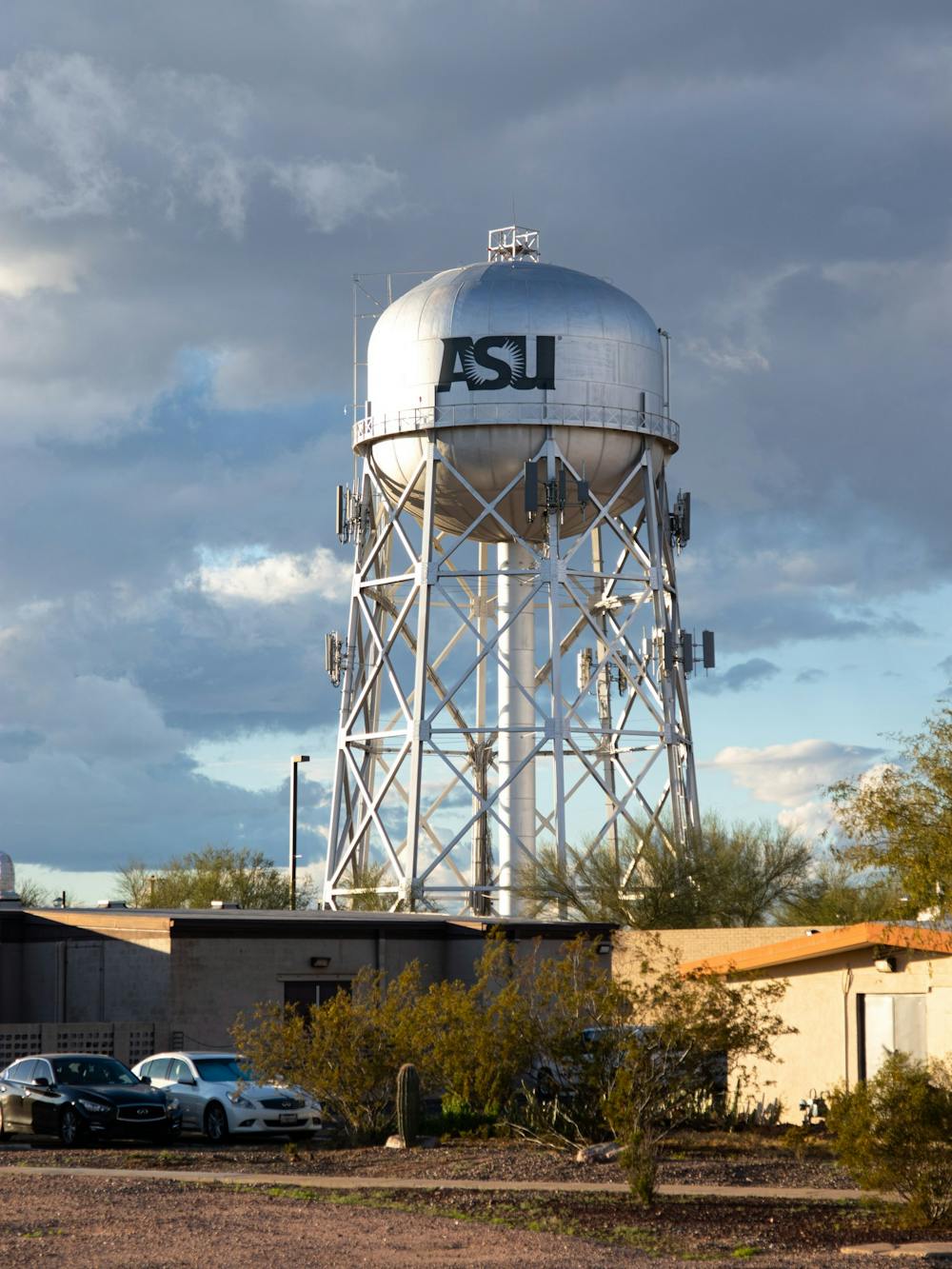Growing up, Arizona Native Leila Ruterman bled maroon and gold. The daughter of proud ASU alumni, Ruterman spent her childhood gradually falling in love with the University’s culture through countless tailgates and raucous football games at Tempe’s Sun Devil Stadium, where the cheers of over 50,000 spectators rattled through her bones. To Ruterman, attending ASU was a rite of passage, a badge that would cement her as a permanent part of the community she came to love.
When it came time to apply for colleges, she only submitted one application — for her, it was ASU or nothing.
But now that she’s enrolled at the University’s Downtown Phoenix campus as a freshman studying sports journalism, Ruterman takes every opportunity she can to escape campus. She flees her dorm every other weekend to make the 40-minute drive back home, where she’ll stay until Monday when classes inevitably force her to return.
“I grew up wanting to be a Sun Devil,” Ruterman said. “Then I came here to downtown, but it doesn’t feel like I’m really even a part of that culture that I wanted to be a part of because Tempe literally feels like a distant land, even though I know it’s only 20 minutes away.”
Although Ruterman spent her childhood enamored with the frenetic collegiate culture of the Tempe campus, attending the school’s Downtown Phoenix campus has made her realize there’s more than one ASU. With a student population of over 10,000, the downtown campus is much smaller than ASU Tempe, by far the school’s largest campus and its original home.
“Culture doesn’t seem to exist here,” Ruterman said of ASU downtown. “It’s like we’re all going to school here, but it doesn’t feel like we share that same common ideal of, ‘Oh, we’re all Sun Devils.’”
Like many freshmen, Ruterman was drawn to the University for the massive state-school feel of its nearly 140-year-old Tempe campus. In fall 2021, almost 55,000 ASU students dotted downtown Tempe, frequenting local landmarks like Mill Avenue, the Memorial Union, Sun Devil Stadium and the Greek Leadership Village.
Under ASU President Michael Crow’s “one university in many places” model, the school has cultivated four main campuses spread across the Valley: Tempe, Downtown Phoenix, Polytechnic and West.
“Each of the campus locations has its own unique physical character, setting, personality and set of programs,” said Joanne Vogel, vice president of student services, in an email. “They are not carbon copies of one another. So, the distinctiveness of our locations helps to meet the varying needs and desires of our students and potential students.”
But students are divided over the success of ASU’s many campuses and their impact on the University’s broader culture. While some have found a small, quaint home on a non-Tempe campus, others — like Ruterman — have criticized the University for failing to elevate the non-Tempe ASU experience to the classic collegiate lifestyle of its original campus.
Crow initially proposed the multi-campus model in 2004, partly to cope with the physical constraints of future growth on the original Tempe campus. Since then, ASU has continued to expand at record-breaking rates, even as student enrollment at many universities has fallen recently. With an on-campus student population of over 79,000, the University now dwarfs a small town.
Today, a majority of ASU students attend the University from outside Tempe’s borders, with online enrollment alone accounting for over 43% of the school’s total population.
But next year, Ruterman won’t be one of them. Determined not to spend her sophomore year feeling shut out of the ASU experience she’s chased her entire life, she’s already signed a lease for a Tempe apartment with several other students also looking to move.
“Downtown shouldn’t stay this way,” she said. “I wouldn’t want anyone else to have the freshman experience that I’ve had.”
One university in many, many places
Before Crow took over as University president in 2002, there was no “one university in many places” model, the signature name he gave to his multi-campus vision in a 2004 presentation. Before then, the University’s home largely lay in Tempe.
West had been the University’s second active campus since the spring semester in 1989, but up until the point of Crow’s multi-campus model, the two campuses essentially operated as their own separate colleges. Today, West is integrated as a satellite site within the larger ASU ecosystem.
Envisioning ASU as "the next great university of America," Crow conceived of ASU’s multi-campus model as a part of his vision to remake the school into a New American University. The University president crafted a proposal to absorb West under the ASU banner and to launch a new campus in downtown Phoenix and rebrand its Mesa campus, then called ASU East, as the Polytechnic campus.
Since then, the school’s in-person enrollment has increased by over 35%, and it continues to shatter its own records year after year. Nearly two decades later, the school is still looking for ways to accommodate its endless growth.
“First, we don’t see limits on growth because we take responsibility for the abundant and unmet need for access to quality education in order to transform society,” Vogel said in the email.
Many times, this has meant the expansion of the “one university in many places” model — even outside of Arizona, into other states and online into the digital realm.
Numerous public universities nationwide boast multiple campuses, but unlike ASU, they rarely venture outside of their home states. Last October, the University announced the opening of a campus location in California — a rare decision for a public university, The State Press reported.
“I couldn’t imagine going to ASU and not even living in Arizona,” said Riley Kanoza, a sophomore studying community health who attends the Downtown Phoenix campus. “Then what’s the point of going to ASU?”
While students may attend the newly opened California Center on campus, the University’s burgeoning and expansive online program also allows thousands more Sun Devils to attend ASU without ever stepping foot into the Valley of the Sun.
West
When Jack Leeman first applied to ASU, he didn’t know where the West campus was. In fact, he didn’t even know it existed. Anticipating the raucous party atmosphere associated with the massive state school, he instead found himself on the smallest of the University’s main campuses — a quaint liberal arts-style site modeled after Oxford University.
Leeman, a junior studying forensic psychology, said West’s campus, located in northwest Phoenix, is a far cry from Tempe’s maze of malls and crowds of unfamiliar faces.
“We’re such a small campus that it does feel like a family,” Leeman said. “It seems like everyone gets involved and connected somehow.”
Now, Leeman is going on his third year living at West, and his enthusiasm for the small, yet close-knit, community of the campus has yet to wane.
He first fell in love with its sunbathed lawns and intimate student community as a freshman, when he made a point to attend every single event put on by West’s Programming and Activities Board, Undergraduate Student Government and Residence Hall Association to escape the isolation of the COVID-19 pandemic.
At those events, he found a sense of belonging as a member of a dynamic community — as a member of something bigger than himself. Eventually, he decided to take the helm of fostering community by becoming the president of PAB West, an event planning organization that works to nurture on-campus school spirit.
“We have one of the strongest communities throughout ASU — and I even put that on top of the Poly and Downtown campuses — because everyone gets connected somehow through going to events,” Leeman said. “People are so eager to just help, or they’re just so friendly with open arms.”
Downtown
Back at her small high school, all Kanoza, the sophomore studying community health, wanted was to be invisible — for everyone to mind their business and keep out of hers. When it came to choosing a college, she passed on UA — a staple institution of her hometown of Tucson — in favor of the relative anonymity that ASU, one of the largest universities in the nation, had to offer.
When she first moved to ASU’s Downtown Phoenix campus last year, she found that Taylor Mall and its surrounding environment reminded her a bit too much of the small, tight-knit community she sought to leave behind.
“It kind of felt like I was continuing in high school,” Kanoza said. “It just feels like you’re staying stagnant rather than moving forward.”
Planning for her sophomore year, Kanoza knew she had to make a change. She decided to move to Tempe to find the traditional collegiate experience she had chosen ASU for.
For Kanoza, spending a few hours a week commuting between campuses from her apartment to class downtown was a reasonable sacrifice if it meant getting out of the small-scale environments she’d grown tired of. In the months since she moved to Tempe, she’s seen a completely different side of the University — and herself.
“It just felt too small in downtown for such a big school,” she said. “Just the experience of actually going to college in Tempe, this is more of what I actually signed up for coming here, especially when they’re going to force us on separate campuses and it’s the same tuition cost, but you’re not getting the same experience.”
Polytechnic
While Kanoza and Ruterman agree that the University may be spreading itself too thin by devoting itself to so many campuses, Tanner Russell, a sophomore studying manufacturing engineering at the Polytechnic campus, applauds the University’s growth. To him, the University’s diverse range of campuses opens the door up for students like him — who shun the traditional college experience of cavernous lecture halls and massive crowds — to also enjoy life at ASU.
Russell initially opted for Poly, the University’s largely STEM-oriented campus in Mesa, after hearing of its project-based courses, small class sizes and hordes of like-minded engineering students. But he doesn’t relegate himself to Poly. As a member of ASU’s men’s volleyball team, Russell regularly takes the shuttle back and forth between Tempe and Poly, allowing him to savor the unique identities of each community.
“Having the campuses in different areas allows the opportunity for more people to go to college,” he said. “That’s one of the great things about having the different campuses: They fit in different students’ needs.”
As students attending campuses outside of Tempe, Kanoza and Ruterman agreed that they’re used to living in the shadow of the original campus, despite downtown, West and Polytechnic being “main campuses” in name. But as the University continues to expand its reach beyond Arizona into other states and the digital realm, they’re concerned that their needs will fall even further down the list.
“If ASU’s going to keep moving forward, they can’t forget about the other campuses too, because I don’t feel like they’re completely done,” Ruterman said. “There’s a lot of potential in these other campuses, but I’m not sure that they’ve reached their full potential.”
Online
In stark contrast to a traditional in-person campus, over 60,000 students interact with professors and peers, attend class and obtain their degrees through ASU Online, a cyberspace so expansive that it dwarfs the entire student population of the Tempe campus. U.S. News and World Report ranked ASU Online as the second-largest online school in the nation in 2019.
Although the University experienced overall record-breaking enrollment this school year, ASU Online’s student population grew at over double the rate of its in-person cohort. But for Madalyn Wright, an ASU Online student studying journalism, the sheer size and sprawl of the online community has served as a roadblock to the development of a cohesive student culture.
“We have a community space for online students, but there isn’t an authentic cultural identity,” they said. “It’s like, ‘Yes, you are a Sun Devil. Technically.’ But it feels more like I’m just an ASU student.”
Wright is aware that their online college experience at ASU probably shouldn’t feel identical to the “core memories” they made when they attended a physical university campus in Alaska. Pursuing ASU Online out of necessity as a parent and working journalist, Wright said the University’s online program can feel like swimming through a sea of discussion boards as they scroll through their laptop alone, only ever accessing their professors and peers through a screen.
While the University’s online program continues to expand at a faster rate than its in-person enrollment, Wright highlighted the disconnect between online students and ASU culture as a glaring missing link in the online experience. To bring ASU Online students into the wider University ecosystem, they said the school should help foster meaningful connections between online students and professors — beyond the ASU-sponsored social media sites and Discord groups, which in their experience have only resulted in superficial, online friendships.
“I just know that I’m not going to sports games and I’m not making these lifelong friends that are going to be at my wedding one day that most students get,” Wright said. “For me, my identity with ASU is more (about) knowing that I’m somewhere where I’m getting a really quality education. For online students, that’s where it stops with us.”
As ASU continues to grow and sprawl far beyond the Valley, the days when Tempe stood as the University’s only home are long gone. But for many students who know the University as something other than its original campus, it’s been difficult to shed Tempe’s legacy and to stake their claim as Sun Devils in their own right.
Edited by Sam Ellefson, Camila Pedrosa, Alexis Moulton and Greta Forslund.
This story is part of The Culture Issue, which was released on Feb. 8, 2023. See the entire publication here.
Reach the reporter at mynguyen@asu.edu and follow @madelineynguyen on Twitter.
Like State Press Magazine on Facebook, follow @statepressmag on Twitter and Instagram and read our releases on Issuu.
